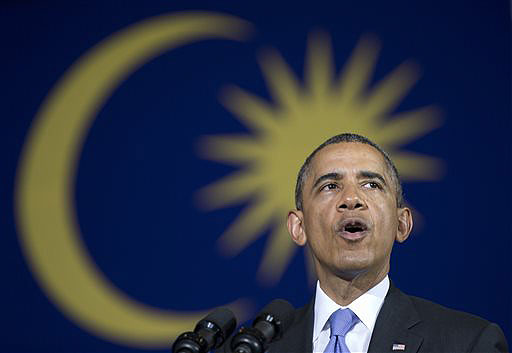KUALA LUMPUR, Malaysia — The United States and the Philippines will sign a new, 10-year defense agreement Monday, officials said, one of the clearest signs yet of renewed American engagement in the region at a time when tensions between China and its neighbors have been rising.
The announcement – the biggest policy achievement to come out of President Obama’s week-long trip to Asia – is likely to generate criticism from Chinese officials, who have made it clear they oppose a heightened U.S. presence in the area. But the pact may reassure several Asian countries embroiled in territorial disputes with China, especially in the South China Sea. It also gives the United States greater flexibility to respond to threats and natural disasters in the region.
“This is the most significant defense agreement that we have concluded with the Philippines in decades,” said Evan Medeiros, the National Security Council’s senior director for Asian affairs, adding that the United States wants “a constructive relationship with China” but also is determined to pursue policies based on its strategic objectives and those of its allies. “And as those threats evolve, the nature of our alliances and security partnerships will evolve as well, whether it’s Japan or South Korea,” Medeiros said.
At least four other countries in the region – Brunei, Malaysia, Taiwan and Vietnam – are also feuding with China over control of parts of the South China Sea. Those territorial claims have both security and economic implications, because the country that controls those areas can access fisheries and underwater oil and gas deposits.
Rommel Banlaoi, executive director of the Philippine Institute for Peace, Violence and Terrorism Research, wrote in an email that the defense cooperation agreement will not only increase the United States’ presence in the region but also will “justify an increase of U.S. military assistance to the Philippines as a major non-NATO ally.”
“The Philippines can use this agreement as a leverage against China’s military and para-military presence in the Spratlys,” Banlaoi wrote, referring to an archipelago of largely uninhabited islands claimed by China and several other countries.
The defense pact had been under negotiation for about eight months. U.S. officials had anticipated it would be signed during Obama’s visit, but that had not been a certainty until Sunday.
The accord does not provide for establishing U.S. bases but will entail moving American ships and planes to the Philippines more frequently as well as engaging in more training exercises with the country’s forces.
Michael Green, senior vice president for Asia and Japan chair at the Center for Strategic and International Studies, said the arrangement is not just about defending the Philippines. It is also about better dispersing American forces in the region.
“U.S. bases are too concentrated in a few places in Asia, which is not good when you’re trying to build relationships, but it’s also not good when there are more ballistic missiles aimed at you,” Green said.
Send questions/comments to the editors.



Success. Please wait for the page to reload. If the page does not reload within 5 seconds, please refresh the page.
Enter your email and password to access comments.
Hi, to comment on stories you must . This profile is in addition to your subscription and website login.
Already have a commenting profile? .
Invalid username/password.
Please check your email to confirm and complete your registration.
Only subscribers are eligible to post comments. Please subscribe or login first for digital access. Here’s why.
Use the form below to reset your password. When you've submitted your account email, we will send an email with a reset code.